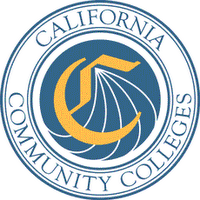Confusion over community colleges
Some of my colleagues get upset whenever they hear the words “junior college.” The consider it a put-down, which indeed it sometimes is. Also, it reinforces the notion that we are nothing more than the first two years of postsecondary education, training freshmen and sophomores to go off into the world of four-year colleges and universities. You know, the
real colleges.
While I don't have the same disdain for the designation “junior college” (Modesto JC and Santa Rosa JC wear the title with honor, after all), I can see how the two-year versus four-year confusion obscures a significant part of our mission. Community colleges are the open-admission gateway to higher education. The students themselves determine what their postsecondary education goals are, although we probably should do a better job of advising them. Still, we are not simply the first two years of a college education. We are that—and a great deal more.

The venerable Peter Schrag, former editorial-page editor of
The Sacramento Bee, turned his attention to the plight of California community colleges and their students in an
editorial published on November 29, 2006. Schrag referred to an important new
report on community colleges by Ria Sengupta and Christopher Jepsen of the Public Policy Institute of California. In his editorial, Schrag takes particular note of the report's finding that only about “15 percent of full-time community college students eventually transfer to a four-year college.” Furthermore, notes Schrag, “Half of entering students never go past the first year.”
A searing indictment? Well, we shouldn't forget that many of our students never intended to go to a four-year college in the first place. One or two semesters may be all they were looking for in the first place. Simple measures of transfer rates to four-year institutions do not accurately gauge the success or failure of the community colleges in achieving their mission of making higher education available to every adult who could benefit from it.
We do have higher attrition rates than we would like. In particular, 33% of our entering students plan to transfer to institutions that grant bachelor's degrees, but only about 15% actually do it. Do half of these students simply change their minds and their priorities during their community college education—or do they flunk out? There's important work to be done, but a key aspect of that work will be identifying the nature of the problems we're trying to solve. “Success” is a highly individual standard, varying from student to student, and we have yet to capture that as accurately as we should.
Schrag acknowledges this point:
A large percentage of students enroll for only one or two courses to improve job skills or to learn English, or to cultivate a hobby. And because it's hard to determine what many students' goals are, or if they really have any, the numbers are squishy and not precise indications of success.
While he endorses the idea that we need to encourage the heightened attention being paid to defining student success and finding the means to measure it accurately, Schrag has a fuzzy appreciation of what the community colleges actually do. He reveals this while citing a research project now in progress under Nancy Shulock at California State University, Sacramento. Schrag identifies what he thinks is a significant problem:
The University of California and the California State University make clear what course preparation they want. The community colleges send as many signals about preparation (109) as there are colleges.
But this is exactly in keeping with the mission of the community colleges! We are not a unified statewide system, nor should we be. Each college must reflect the needs of its own regional community. As noted on the California Community Colleges
website, we operate under a very broad brief stipulated by the Education Code of the State of California:
By law (link to Education Code Section 66010.1-66010.8) the California Community Colleges shall admit any California resident with a high school diploma or the equivalent and may admit anyone who is capable of profiting from the instruction offered.
Would you like to come up with statewide community college standards that would cover all possible different situations? The only real requirements for admission to a community college are age (you're supposed to be an adult, with rare exceptions) and likelihood of benefit (you're ready to learn). If you do plan to transfer to a campus of the California State University, then our expectations of you are the same as those at any campus of CSU system—but you don't have to meet them coming in, just going out, when you're ready to transfer. Ditto for prospective University of California transfers.
Unfortunately, Schrag accepts the position of the
Legislative Analyst's Office that community college tuition is too low.
The California Legislative Analyst has pointed out that if California's community college fees were higher, many students would be entitled to higher federal student grants, which would in effect generate more funds for the system but cost students little. In effect, California taxpayers are subsidizing the federal treasury.
If we raise fees, enrollments go down. We have seen this over and over again. Must we travel that same road one more time? Of course, “many” students would qualify for federal student grants, so we could squeeze some dollars out of Washington, but “many” would not. They'll drop out. When Pete Wilson was governor, he agitated for a sharp increase in student fees and was largely beaten back by a Democratic legislature, but even the smaller fee increases that were enacted hit our
student numbers. Furthermore, as Schrag admits, the community colleges don't even get to keep the fees they collect: the state soaks them up. Frankly, I wish we'd go back to the days when the fee was
zero.
Community college students pay for their educations after the fact, in the taxes they pay after their wages go up in direct consequence of their improved educations. Fee increases kill the golden goose, yet friends of public education like Schrag keep suggesting we hike our fees. This is bad medicine, previously administered and spit up with much retching.
Chancellor Brice Harris, the executive officer of the
Los Rios Community College District (which includes
American River College and its three sister colleges), tried to explain some of the varying measures of student success in a
letter to
The Bee, which was published on December 6, 2006.
The role of community colleges
Peter Schrag's column (“Community colleges in dire need of finishing touches,” Nov. 29) is yet another example of a lack of understanding about the role of California's community colleges. We don't transfer enough students? Well, according to the report Schrag cites in his article, 33 percent of all UC graduates and 66 percent of all CSU graduates started at a community college, so we must be doing something right. The fact is that California's community colleges are the most accountable system of higher education in the state. It is that accountability that provides all the data so many “experts” are chewing on.
Yes, many of our students lack adequate preparation and need remediation, but guess what: All of us in higher education are struggling with underprepared students.
The report to which Schrag refers is complimentary of California community colleges, but you wouldn't know it from his column. According to the report, attending a community college increases a person's earnings by 8 percent to 10 percent, even if he or she doesn't get a degree or transfer. Earnings increase even more with graduation. Schrag also suggests that our system would be improved by charging students more tuition in order to leverage more federal financial aid. This approach has been tried in recent years, and the net result has been to drive literally hundreds of thousands of students out of our colleges. California's community colleges are providing taxpayers the best return on the dollar of any higher education system in the state.
—Brice W. Harris, Sacramento
Chancellor, Los Rios Community College District
At a subsequent meet-and-greet at American River College, Chancellor Harris noted that the Public Policy Institute report was “85% complimentary toward the community colleges and 15% critical, but news reports all concentrate on the critical part.” Harris suggested that community college staff and faculty needed to be more active in “pushing back” by raising people's awareness of the nature of our broad-based mission and resisting efforts to put us in a neatly defined box.
There are lots of well-meaning people out there who want to help out the California Community College system. In return, let's help them understand who we are and what we do. In the end, it will help our students and forestall those who would destroy us in order to save us.
 Our silly president commissioned a report from the Iraq Study Group, a council of learned elders and retreads from previous administrations, when all he really had to do was chat up Stephen Oakley of Fair Oaks. Mr. Oakley disdains the defeatist talk coming from the ISG because he can solve all of our problems in Iraq with a snap of his fingers and his own personal Fourteen Points (equal in number, but not in tenor, to Woodrow Wilson's).
Our silly president commissioned a report from the Iraq Study Group, a council of learned elders and retreads from previous administrations, when all he really had to do was chat up Stephen Oakley of Fair Oaks. Mr. Oakley disdains the defeatist talk coming from the ISG because he can solve all of our problems in Iraq with a snap of his fingers and his own personal Fourteen Points (equal in number, but not in tenor, to Woodrow Wilson's).

